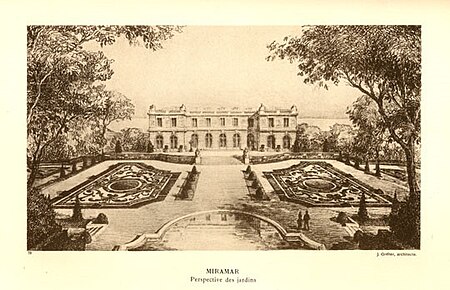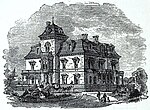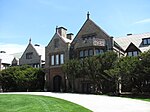Miramar (mansion)
Gilded Age mansionsHouses completed in 1915Houses in Newport, Rhode IslandWidener family

Miramar is a 30,000-square-foot (2,800 m2) French neoclassical-style mansion on 7.8 acres (32,000 m2) bordering Bellevue Avenue on Aquidneck Island at Newport, Rhode Island. Overlooking Rhode Island Sound, it was intended as a summer home for the George D. Widener family of Philadelphia.
Excerpt from the Wikipedia article Miramar (mansion) (License: CC BY-SA 3.0, Authors, Images).Miramar (mansion)
Bellevue Avenue, Newport
Geographical coordinates (GPS) Address External links Nearby Places Show on map
Geographical coordinates (GPS)
| Latitude | Longitude |
|---|---|
| N 41.458285 ° | E -71.304767 ° |
Address
Miramar
Bellevue Avenue 646
02840 Newport
Rhode Island, United States
Open on Google Maps










